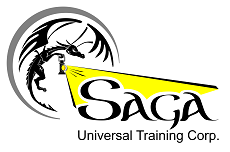We often hear the term competent worker, but what does it exactly mean. Taking a course and getting a certificate equal to being competent is another statement you may have heard.
A competent worker is defined by must jurisdiction in Canada as the following:
“competent” about a person means adequately qualified, suitably trained and with sufficient experience to safely perform work without supervision or with only a minimal degree of supervision;
Province of Alberta Occupational Health and Safety Act Statutes of Alberta, 2020, Definition 1,(d)
The terminologies may vary from province to province, but their meaning is the same.
How can I become a competent worker?
In our experience, the workers and employers with the highest level of competencies have used the following three steps program:
Attend a training course that includes a theory and practical skill assessment.
The worker is teamed up with a competent worker at his workplace and goes through the company-specific hazards, equipment, policies, and procedures. After the competent worker is satisfied, the new worker meets the site requirements; the competent worker or a supervisor signs off the new worker. You may have heard of the Green Hand program.
Regular observation of the workers to ensure they are still performing their work as per company policies and OHS legislation.
Does a worker stay after he has been deemed competent?
A competent worker can lose their competencies due to the following factors. A new piece of equipment, a different worksite with new hazards, and legislation, policies, and procedure changes. Last but not least, complacence, taking shortcuts. This instance often occurs because the worker has not been involved in an incident he believes won’t happen.
An interesting fact when you look at Safety statistics, new workers have the highest frequencies of incidents (Injury or materials damage); usually, the severity is low or medium. Competent workers that have been competent for ten years plus have a lower frequency, but the severity is higher.
How does a worker stay competent?
Regular verification of the workers by direct supervision. People do what check is; if done in a positive manner, it can increase the worker’s morale and confidence.
Hazard assessments of the worksite every day. The Hazard assessment doesn’t stop at the formal assessment of the worksite or the prework Field Level Hazard Assessment. It is continuous. The best equipment operator will inspect their equipment every pre-shift and more frequently, depending on the weather conditions or soil conditions.
When a new piece of equipment or modification to the current piece of equipment is made, they will take the time to get acquainted with the equipment. You may be using a new Fall Protection Harness, and the adjustment on it is different from the previous one you used.
The best advice a Wise Safety Person once give me:
“Never think you know everything; this is the day you will end up in the dirt instead of on top. Be curious, ask a question, be alert, don’t assume.”
One day you may be able to perform this task:

